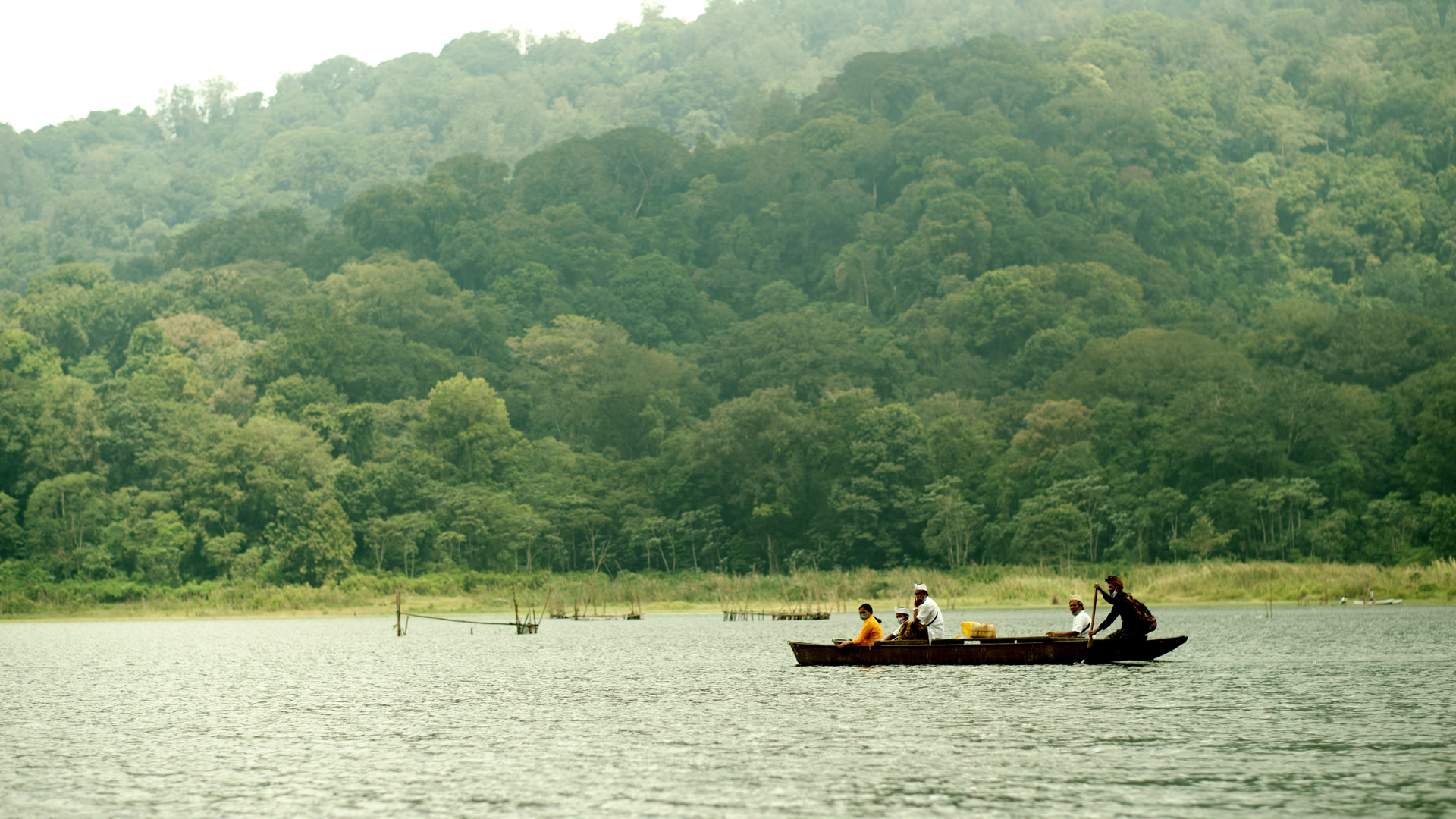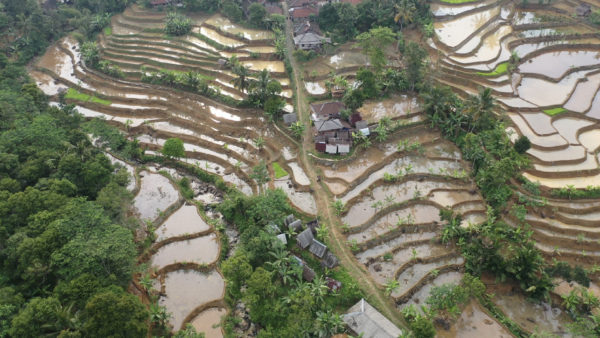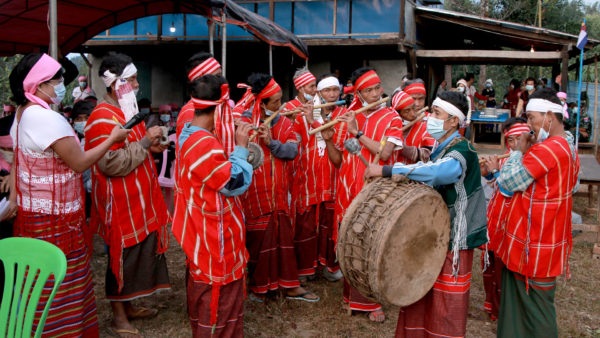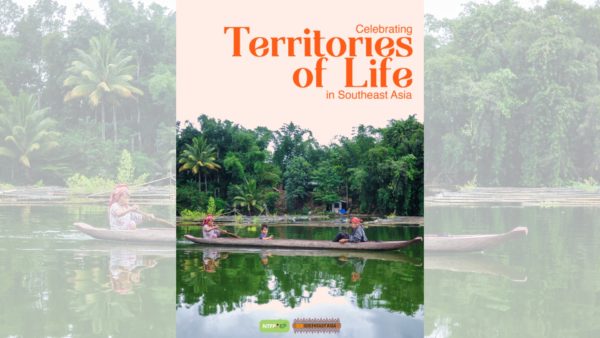The younger generation of the ADT, together with the elders as well as the future generations, have the duty to look after Alas Mertajati so our lives can be sustainable
First published on 09/07/2023, and last updated on 11/13/2023
Written by Ketut Santi Adnyana
Edited by Atiek Kurnianingsih
Translated by I.A. Dwitasari
Note: This article is from the recently published report “Celebrating territories of life in Southeast Asia.” The text has been edited for the ICCA Consortium website.
Mist covers the lush trees that surround the lake and dew clings to the top of the grass while the ibis perches on the canoe, waiting for the sun on the eastern horizon. This is the ambience of or sacred Lake Tamblingan in the morning, one of four lakes in Bali which is still pristine and untouched by human greed. The traditional canoe is the only transportation allowed to cross the lake. Cage fish farming and water-based tourism, such as motorboats and paddle boats, are not allowed in the lake. Meanwhile, in the other three lakes, Lake Buyan, Lake Beratan, and Lake Batur, the sound of motorboats roars, and fish farming and various water-based tourism are commonly seen.
Lake Tamblingan is located in Buleleng Regency, Bali, Indonesia, in the highest part of a forest area of about 1,300 hectares called Alas Mertajati (Mertajati Forest). Alas Mertajati is supported by four villages residing below it, namely Gobleg, Munduk, Gesing and Umejero. These villages are called Catur Desa with a unitary Indigenous community called Adat Dalem Tamblingan (ADT). From generation to generation, the people of these villages have regarded Alas Mertajati as an upstream headwater which is sacred and sanctified.
Alas Mertajati is an intact area that we inherited from our ancestors for thousands of years. In the past, the community known as Karaman I Tambelingan lived around the Lake Tamblingan area, as written in the chronicle of Hindu Gobed. This is confirmed by the existence of nineteen sacred sites from the megalithic era, such as Linggayoni and Bebaturan in the form of menhirs that scattered around Alas Mertajati. Karaman I Tambelingan is also mentioned in historical records in the form of inscriptions from the ancient Bali kingdom in the 10th century. At the end of the 14th century, to maintain the sanctity of the lake water and to preserve Alas Mertajati, Karaman I Tambelingan moved to the area below the lake which later became Gobleg Village. Subsequently, the village developed into the three other villages.
This historical proximity and sacred values give us the responsibility as well as the right to maintain and protect Alas Mertajati which includes Lake Tamblingan. We realize that the water which is essential to our life comes from there, and this perspective urged the need to conserve the Alas Mertajati as the source of life. The manifestation of this belief has been preserved for generations as Piagem Gama Tirta: live to glorify water and maintain harmony with nature. A series of rituals is held every two years, aimed to purify nature and the people who live around it, as well as sharing welfare with others. Thus, the balance and preservation of nature are maintained.
“We forget to love it,
(Nosstress, Hopefully Just Forget)
We just remember to enjoy it,
We forget to take care of it,
and we forget it’s our friend”
Currently, however, following the regulation of the Indonesian government, the Alas Mertajati area is divided into three different forest areas: Nature Tourism Park, Nature Reserve and Protected Forest Area. These statuses have rapidly affected the transformation in Alas Mertajati, posing serious challenges to our community. The three different statuses of the forest areas make the community deal with different authorities, weakening the position and control of the Indigenous People over the forest. As a result, forest has degraded and forest density has decreased due to illegal logging. Some species of flora and fauna have become rare and even extinct. This not only reduces the quality of Alas Mertajati but also the surrounding environment, especially on the availability of clean water. The flow of the river and several water springs has decreased, and some have dried up. Camping activities in the area of the lake declared as Nature Tourism Park cannot be controlled by the local custom which further reduces the quality and sanctity of Alas Mertajati. The community is also experiencing serious problems in which their sense of belonging and caring for Alas Mertajati is dwindling. Some people have forgotten the important function of Alas Mertajati as the source of life, providing fertile soil, clean water, and clean air.
These challenges and problems pushed our community to seriously reorganize. With a strong basis and reason for preserving Alas Mertajati, we tried to claim it as Customary Forest. Participatory mapping, socio-cultural research, and participatory vegetation and fauna inventory were conducted to collect the basic data. The research has shown that there are about 90 species of trees and 50 types of undergrowth growing in Alas Mertajati, as well as dozens of fauna species living in it. In addition, there are 54 natural springs scattered in the Catur Desa area, although some have dried up or flow only during the rainy season.
The activities to claim Alas Mertajati as Customary Forest were carried out by the community’s younger generation, including myself. We included various community groups, such as women and banten (offerings) makers in these activities. Banten for rituals utilizes various types of natural materials from Catur Desa and also from Alas Mertajati. Some of these are bija ratus which is assembled from all types of agricultural grains, kidang (deer) as a native animal of the Tamblingan Forest and kuyuh (cork fish) as endemic fish of Lake Tamblingan. Some of these ritual materials have become difficult to obtain because of scarcity.
Immigrants coming from other regions make up 80% of the population of Tamblingan Hamlet. My friend Willy said, “The reason for the degradation of Alas Mertajati is the lack of sense of belonging, especially of the immigrants. The sense of belonging can arise when we understand and get the benefits from the existence of the forest and the lake. Apart from clean water and clean air, I get the economic benefits from Alas Mertajati as a trekking guide. I can share my knowledge of the forest and lake with my guests. While walking, I usually ask my guests to pick up trash on the path we pass, and I also monitor illegal logging activities.”
Another friend, Wahyu, a clove merchant in Catur Desa, added, “Out of sight, out of mind. If we have a better understanding of the forest, we will feel attached and proud because we still have a pristine forest and lake. That will encourage us more to conserve the Alas Mertajati. I only got to know Alas Mertajati through the various activities that we have carried out since 2018. We only go for ritual purposes every two years, so we don’t know of its condition, let alone conserve it. So, one thing we can do to create a sense of belonging to Alas Mertajati is to introduce it to people and provide a deeper understanding through books and videos we made.” One of the activities done by the community was to build Bale Melajah Alas Mertajati, a simple building near the lake that serves as a study center where the youth can gather or do activities near the lake and forest.
Werdi, the leader of our group, reminded us, “Nowadays we can no longer protect the forest only through myths like we used to. For example, before people believed that if you cut down a tree, you will suffer various types of misfortunes. Together with the elders, we must dig into the forest management regulations of the past. We also need to make new forest protection rules, and strict penalties if anyone violates them. As the elders recall, there were rules for fishing in the lake. Back then, we could not take the fish from Lake Tamblingan freely. Only those who worked as menega (traditional lake guards) were allowed to do so. No one was allowed to live around Lake Tamblingan, including the menega.”
Unlike others who only seek to gain economic benefits from our forest, we cannot go anywhere else if our living space is damaged. We, the younger generation of the ADT, together with the elders as well as the future generations, have the duty to look after Alas Mertajati so our lives can be sustainable. We will continue to embrace the memory of the local wisdom from our ancestors, Karaman I Tambelingan, so that we may pass this on to the next generation. Hopefully, others will understand our feelings, thoughts, and determination in protecting Alas Mertajati, our source of life.



